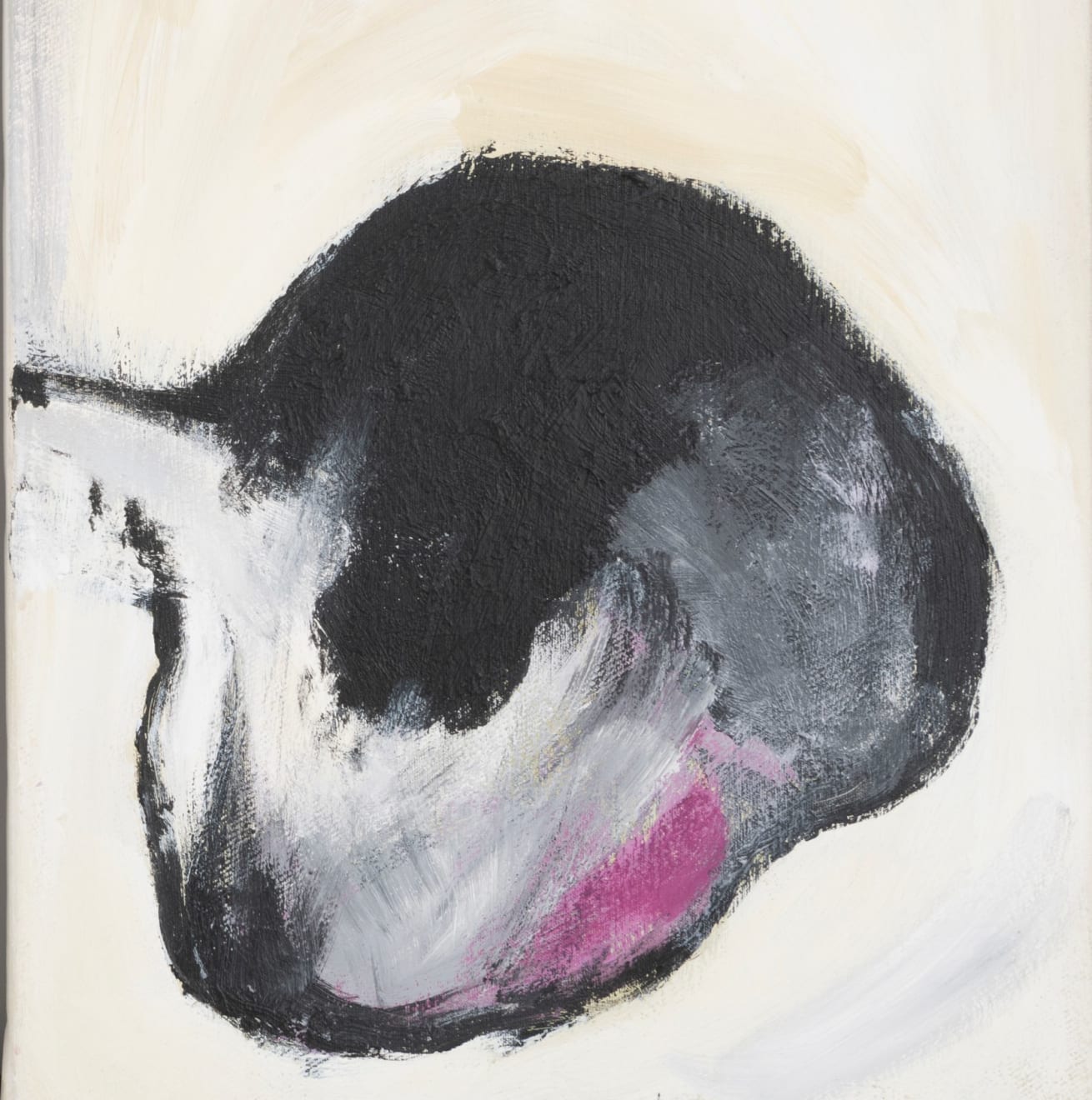Botond Részegh
Angel, 2021
Acrylic on canvas, framed
19 x 27 in
48 x 68 cm
48 x 68 cm
RB0032
Copyright The Artist
Further images
For centuries, theologians, poets and artists have imagined and argued over what angels might look like or whether or not they can be seen at all. The existence of angel-like...
For centuries, theologians, poets and artists have imagined and argued over what angels might look like or whether or not they can be seen at all. The existence of angel-like figures in art can be traced back millennia: from the monumental winged figures Lamassu on Assyrian palaces with the earliest examples dating as far back as the 10th century BC, The Winged Victory of Samothrace (c. 190 BC) - made as an offering to the gods for a sanctuary on the Greek island, the many winged angels found in Byzantine art, to the Baroque period’s sensual, human-like bodies with wings. Részegh’s 'Angel' offers an unconventional look at an ancient subject, illustrating an elegiac dialogue among mythology, theology and art history. Wing-like forms appear to float and ascend in two tightly connected panels. Pared down to a palette of black and white with fleshy accents of purple and pinkish reds, energized, painterly gestures are brushed in dense layers of acrylic paint. The diptych format in this series punctuates the picture plane by creating tension and ambiguity, as well as fracturing a continuous sense of time. In several works, Részegh also leaves a small but intentional space between paired canvases, revealing the wall behind. “Részegh's angels are not inhabitants of the mythically overcolored sky, but, rather, powerful forces that are in tension with each other or merge into each other, participating in our created world,” writes Benedek Totth on Részegh's angels in Everyday Angelology (2022). “Could they be us without wings? These lines do not enclose a form - angel or human - but open up the infinite. These beautiful torsos, the aesthetics of everyday life and bodies pressed together, infinite lines entangling and separating…when all that remains is desire - the desire for desire, the body's longing for body, for embrace, to be in each other's palms for a while, to enjoy the illusion of safety and to taste a little of the angelic world - we become angels, leave earth and step onto our planet. Never has desire been so hesitantly endless.”
Infused with explosive energy and visceral rawness, Részegh’s paintings simultaneously invoke poetry, history, literature, metaphysics and the artist’s own contemporary experience. His pictorial language is distinguished by an idiosyncratic vocabulary of figurative forms and gestural lines. Repeating motifs of solitary figures, anatomical structures and distorted bodies in motion, rendered in bold, rough brushwork, swell with emotion and rigor.
Born in Romania in 1977, Botond Részegh currently lives and works in Miercurea Ciuc, Romania and Budapest, Hungary. Részegh has exhibited internationally at venues such as the Art Museum Cluj Napoca, The National Museum of Art of Romania, The Museum of Art Timisoara, the Viltin Gallery Budapest, the Hungarian Cultural Institute in Rome and the Romanian Culture Institute in Vienna. His work belongs in the collections of Pope Francis, Northeastern University and the Art Museum of Prahova, among others. Részegh graduated from the National University of Fine Arts in Bucharest, where he specialized in graphic arts. He also attended a doctoral program at the Hungarian University of Fine Arts in Budapest.
Infused with explosive energy and visceral rawness, Részegh’s paintings simultaneously invoke poetry, history, literature, metaphysics and the artist’s own contemporary experience. His pictorial language is distinguished by an idiosyncratic vocabulary of figurative forms and gestural lines. Repeating motifs of solitary figures, anatomical structures and distorted bodies in motion, rendered in bold, rough brushwork, swell with emotion and rigor.
Born in Romania in 1977, Botond Részegh currently lives and works in Miercurea Ciuc, Romania and Budapest, Hungary. Részegh has exhibited internationally at venues such as the Art Museum Cluj Napoca, The National Museum of Art of Romania, The Museum of Art Timisoara, the Viltin Gallery Budapest, the Hungarian Cultural Institute in Rome and the Romanian Culture Institute in Vienna. His work belongs in the collections of Pope Francis, Northeastern University and the Art Museum of Prahova, among others. Részegh graduated from the National University of Fine Arts in Bucharest, where he specialized in graphic arts. He also attended a doctoral program at the Hungarian University of Fine Arts in Budapest.









